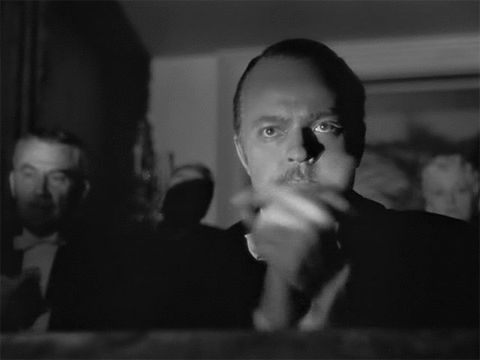-
Posts
15,955 -
Joined
-
Last visited
Content Type
Profiles
Blogs
Forums
American Weather
Media Demo
Store
Gallery
Everything posted by Carvers Gap
-
This is the big concern for me....
-
I think the likely outcome (Euro AIFS hints at this) is an ana front like we have seen in recent years.
-
With very cold air potentially entering the pattern, model mayhem (think about the commercial) might be underway.
-
I think I what we are seeing is deterministic modeling bouncing between a PNA and an EPO. I am sure the are having trouble with the double block.
-
wxbell algorithms…. 18z GFS deterministic… Jan 1, 3, 7, 10…light snow, light snow, ice/rain/snow, snow Plateau gets 6-11” total Kuchera with eastern valley locals at 2-6” total 18z ensemble. Similar events and similar totals though slightly less than the 12z maxed out run
-
Does the 18z run looks significantly different in wxbell than it does on Tropical Tidbits? It had a huge winter storm at the end of it on wxbell? It also had a marginal winter event earlier which doesn’t look the same on TT. I am out an about and tough to tell on an iPhone.
-
And the Weeklies do try to put the trough into the Mountain West towards the end of January. The interesting piece is that heights don't build and hold over the SE. That implies plenty of push from cold even if the trough lands in the front range of the Mountain West.
-
Today's Euro Weeklies' snapshots....
-
Yeah, man. I was thinking about you. Those wind chills went scorched earth on my yard.
-
I lived in Florida at the time...lived with the Philistines for a couple of years while my dad helped build EPCOT as an accountant for the mouse. For a winter lover, it was purgatory, but free tix were nice. Anyway, did Knoxville's ice storm occur during that year or the year before? The orange groves in Orlando froze both winters I was down there - wiped them completely out. Tenn beat Bama for the first time in my lifetime while I lived down there. When I lived in Knoxville prior, my next door neighbor was a Bama fan. I still feel a missed opportunity to rub it in some.
-
I will use the EPS which has lighter snows, but here are some of the windows I am looking at(surely not all verify, but here it is for score keeping purposes.). Chance for upslope at higher elevations. Northern stream pulse... Could be severe or could be ice or could be rain to snow or snow to rain. Choose your own adventure book right here. Best chance.... Another best chance. WAA?
-
I was thinking that this also reminds me a lot of 14-15. I am sure that probably gets me into trouble with ENSO(opposite of now), but just kind of has that look.....
-
I will add that for people in SE TN, this pattern has the ability to deliver if we can get anything going in the STJ. I know we don't get to talk snow for that areas as much lately....but we could see snow well south of where we normally see it if the cold verifies. This is the worst of the 7d 500 ensembles for January 4-11. That way I am not cherry picking. Normally, I would cherry pick this!
-
Image 1: Amazing to see the EPS(ensemble!) that cold. Image 2: 7 day mean...10F below normal for January is gonna be cold if that verifies. Image 3: I have been waiting for the EPS snow mean to show this. Image 4: Again, the Canadian model often does better in our area when it gets really cold. Shave off a few degrees, but it is decent. Image 5: The GEFS has consistently been throwing out decent snow totals for this time frame. And interestingly, as John noted yesterday, the Jan 10-20 range might be the better time frame for snow. When we see ensembles looking like this, that is a good signal for wintry precip.
-
I was expecting a toasty day today, but I am about to freeze my tail off in this wind! And yes, super interesting storm track. As you know well, these storm tracks aren't unprecedented, and we are overdue a good stretch of winter.
-
LOL. Of course it would!
-
This is just nasty....
-
The 12z GEFS/GEPS don't look too dissimilar regarding this....
-
The 12 CMC was on the "GFS light" plan. The Euro is gonna come in bone dry......LOL. Why? We have to have all options on the table after the 12z suite.
-
Ice storm - check Miller A - check Slider - check Clipper - check As John noted, that is probably a maxed out run, but it was fun to look at!
-
More....
-
Honestly, too many events to count on that run. Whatever you like, the 12z GFS was dishing it up. Been a minute since I have seen a run like that.
-
-
Well, that was a proper run, 12z GFS. One right after another.....
-
Interestingly for TRI, the airport made it to -21F just looking at records. The previous night was -16F. Those would obviously be all-time lows. The airport sits up on a knoll, and if memory serves me correctly, it didn't get as cold as other areas deeper/downstream in the valleys. I got to -26F in my local (southwest Virginia) with about 15mph winds(conservative estimate...drifts were 1-2')...so new scale would have me in the low -50s for WCs. NE TN got wicked cold. I have shared this before, but we were fixing pipes under my house in the middle of that. I also remember my dad putting a starter in our '72 Impala in the K-mart parking lot(now U-Haul). I have never been that cold since. Very rare weather set-up to bring a piece of the PV into the eastern valley. Interestingly, we have had some really cold wind chills during the past couple of years. Those wind chills would likely rival the mid 1980s. A good friend noted that we seem to be going below zero in the eastern valley a bit more after a long lull. Anyway, great conversation and a fun walk down memory lane. That all time record low can stay right where it is. LOL.











